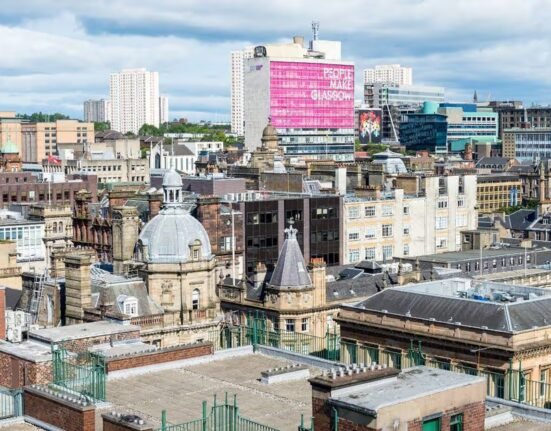How will the threat of wildfires affect real estate businesses in the western portion of the United States? The answer to the question differs from market to market, even within certain states. California, for example, sees different measures being taken by region. A recent CoreLogic report detailed that as of July 15, 2024, more than 24,000 wildfires burned over 3 million acres of land this year, making the issue as prominent as ever.
In Los Angeles, the impact of the fires has been significant for real estate professionals.
“There’s been fires up and down our markets. It’s been increasing (insurance) costs by two to 10 times, and a lot of providers have actually pulled out, making it hard to get insurance in some areas, forcing the buyers to have to go with the California Fair Plan, which is really expensive,” said Sunny Narang, CEO of the Rise Real Estate Group with the Real Brokerage, which serves the Los Angeles metropolitan area.
The California Fair Plan was established by statute in 1968 and consists of a pool made from all the insurers who are licensed to conduct business in California, offering insurance for people who can’t obtain it through a regular insurance company.
The issue of homeowners insurance is certainly not isolated to Los Angeles, however. In Sonoma and Napa Counties, north of San Francisco, REALTORS® are adapting in a number of different ways.
“It’s really two markets,” said Matt Sevenau, a REALTOR® with the Living in Wine Country Group affiliated with Compass, which serves Sonoma and Napa Counties in Northern California. “Selling stuff on the valley floor is kind of like business as usual. Selling stuff in the mountains is like, ‘Okay, now we got the insurance wildcard.’ This has been kind of a crazy vacuum. What are we doing for the last three and four years? And now we’re starting to figure it out.”
The nuance in the Northern California counties illustrates the fact that where the wildfire threat is most prevalent, insurance companies have had to raise their prices to offset the additional risk.
According to Sevenau, “almost all the conversations are about what is the cost for insurance and what are my options? And I’m just talking about mapped high risk fire zones. I don’t know what percentage of California is mapped high risk (for) fire, but Sonoma Valley is probably maybe 20%. Basically it’s just the hills and the valley floor. For the most part it’s not considered high risk, so it’s just once you get into the hills.”
While more infrastructure is being updated, that’s only one part of the equation. The other is building. Sevenau detailed the materials that insurance companies are deeming acceptable in the wake of the decimation.
“If it’s all stucco, concrete, metal, roof, clay, tile roof, and you have proper clearance around the house for anything that can burn, that’s technically—I mean it depends on how the insurance company looks at it, but they are starting to come up with standards where they say, ‘Yes, this is fire hardened to this degree and we’re going to give you a 5% or a 10% deduction in your insurance policy because it meets all these materials.’”
The more “fire-hardened” the home is in a market affected by wildfire, the easier it is to insure, and as a result, the easier it may be to sell as well. Sevanau was of the opinion that “up in the hills, I think that the future of all building is going to be fire hardened homes. I just think that’s got to be the future standard.”
Further west, in the middle of the Pacific, the island of Maui was heavily impacted by wildfire threats just last year. The heavy toll taken by the flames also reflects in insurance costs.
“There’s just a very detailed (insurance) review process especially for condominium complexes,” said Chelsea Dimin, broker/REALTOR® affiliated with Compass in Maui. “What a lot of condos have had to do is put the insurance as an individual cost and responsibility for homeowners. It’s no longer a shared expense that’s part of the HOA fees. So it’s definitely been more of a financial burden for both homeowners, single homes and condos because insurance rates have gone up. But it really does depend on the use of the property, how it’s being used, and if it’s a condo versus a single-family home. There’s a lot of different variables, but overall, it’s definitely much more difficult to insure older homes with the cost being so high that along with the high interest rate environment, it can make more properties out of reach for a lot of buyers now.”
Narang has also experienced buyer hesitancy as a result of these expensive premiums: “We had a home in the Hollywood Hills that we had a client that was looking to purchase, and when they found out they had to go with the California Fair Plan, which was significantly more than they were expecting, they backed out of the transaction.”
According to Narang, the “northern part (of Los Angeles), anywhere close to the mountains has been altered and a lot of the buyers don’t want to pay these crazy insurance premiums. So they’ve been looking elsewhere.”
While that dynamic unfolds in Los Angeles, in Maui, areas that used to be considered desirable are now being reconsidered due to devastation from the wildfire threat.
According to Dimin, “Especially right after the fires, more buyer demand shifted to areas that weren’t as hot and dry.”
“So for example, the north shore of Maui—most of the north shores of all the Hawaiian islands are very tropical, lush, green. They’ve received more precipitation. They tend to be not as developed because they’re not as sunny, but they do have a lot more greenery. And that is definitely safer than the drier zones such as Kula or Lahaina. So the demand shifted toward these more lush, tropical areas that received more precipitation.”
Several different measures have been taken to combat the effects of the fires. In wine country, Sevenau says that “most of these big wildfires were sparked by winds, by power lines.”
“In California, almost all of our power lines are above ground,” he explains. “And so trees are hitting and you get a spark from the wires and that’s where a lot of these fires over the last several years have started. And so what they’ve started doing is just burying all the power lines in order to get them out of the sky and into the ground. But that takes time and money.”
In Maui, the county has used different tactics to see that wildfire doesn’t strike again: “Since the fires, the electric companies have taken extreme precaution where even if the wind barely blows now, they’ll turn the power off in certain areas of Maui. So there’s a lot more power outages now that are intentional if there’s a storm predicted to come, just to be proactive on it now,” according to Dimin.
Updating infrastructure and building techniques to reflect the devastation requires crucial time, as explained by Dimin:
“Eventually as they rebuild Lahaina, they will be putting underground utilities, but a lot of the construction here from the 70s, 80s had overhead utilities. So those are definitely prominent across the island still, but your newer construction, those are all underground. I think burying lines would definitely be a great solution. It’s costly and will just take time because you’re basically upgrading the entire electric grid across the island.”
What’s the long-term outlook for selling homes in areas affected by wildfire? The answer to the question appears to be multifaceted, with much of the relief efforts depending on recovery over a longer timespan and the addition of resources devoted to such recoveries.
The new insurance landscape will be a barrier for some buyers as well. These dynamics will make a difference moving forward in various real estate markets.
“It’s impossible to get a shake roof insured. So these are the types of more stringent rules that are happening that one way or another it’s coming out of a homeowner’s pocket,” said Dimin.







